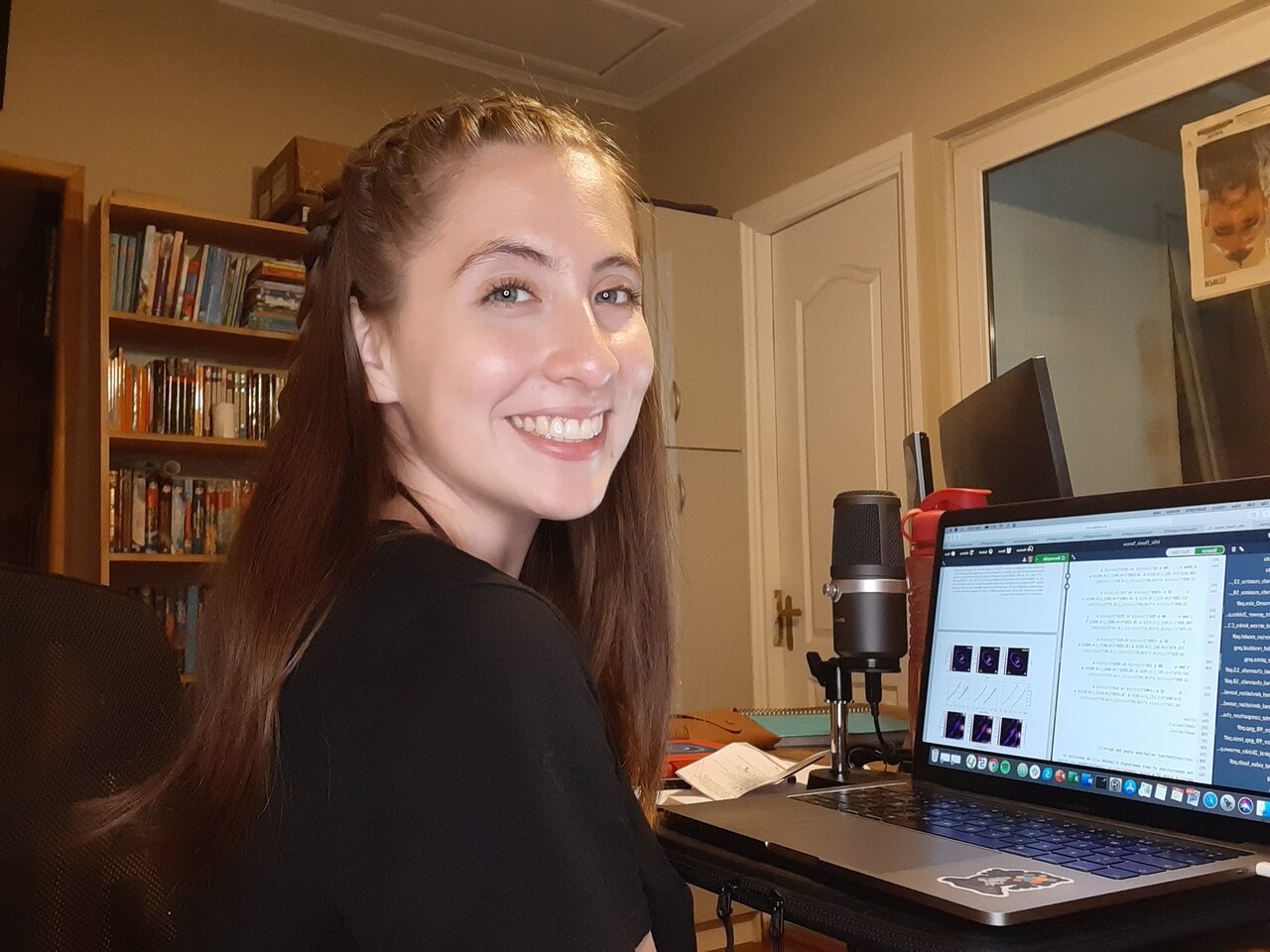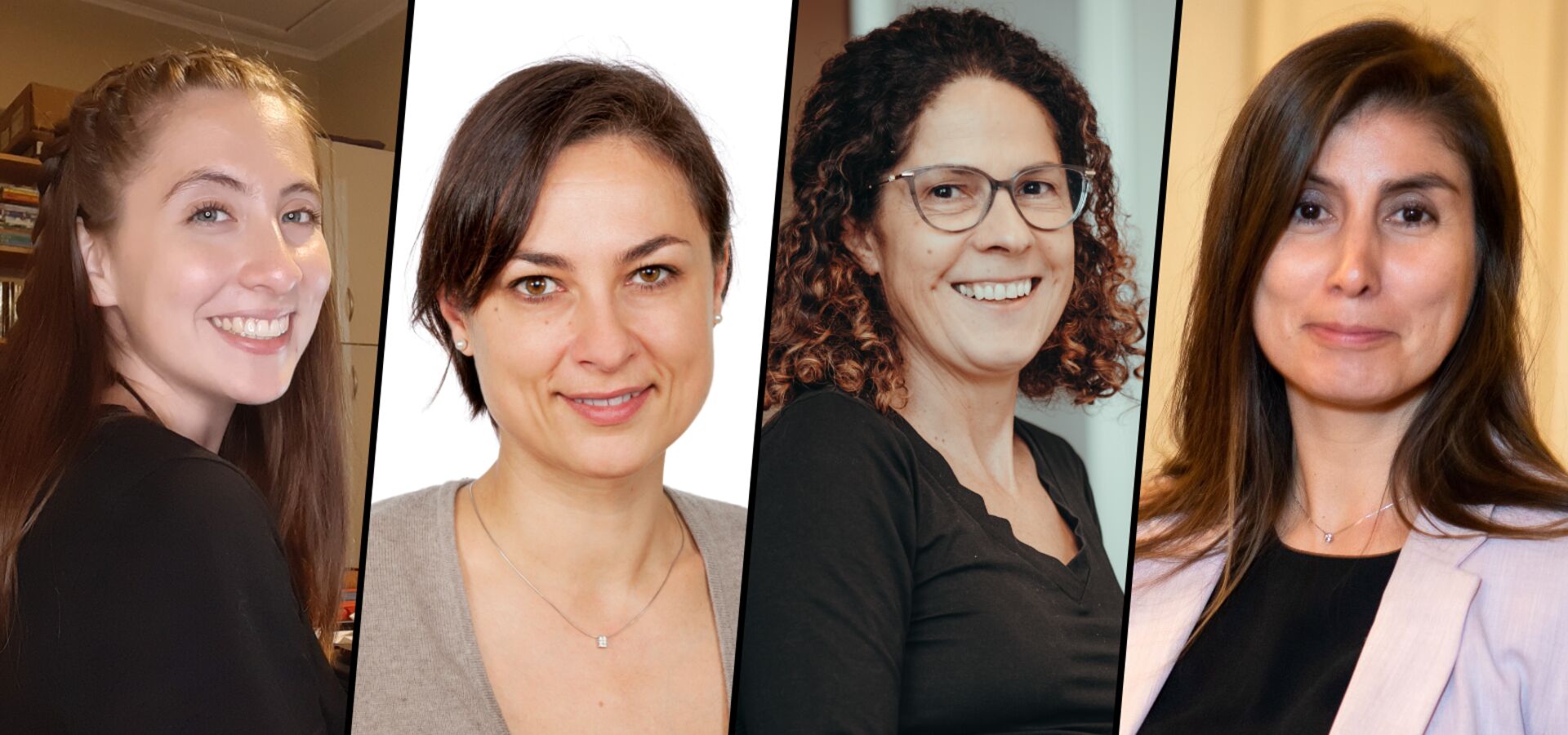- What motivated some women at ESO to pursue a career in STEM
- What their current STEM roles are, and the path they took to get there
- Some of the challenges they faced along the way and solutions for the future
As a continuation of ESO’s celebrations of the International Day of Women and Girls in Science, we present part two of our interviews with women at ESO with roles in STEM (Science, technology, engineering, and mathematics). Our interviewees occupy roles ranging from instrumentation engineer to software developer. Here we highlight their individual career paths, presenting a discussion about the issues facing women in the sector. Our interviewees also reflect on what advice they would give their younger selves.
A universal language
“I choose physics because it describes how things work with the universal language of maths,” begins Eleonora Sani, staff astronomer at ESO in Chile. “You do not have to translate maths, it is the same for everybody. When it was time to choose the specialisation, I had no hesitation: astronomy was my way.” She now combines her research on active galaxies with duties at ESO’s Paranal Observatory, where she’s the Deputy Head of Science Operations. In addition, she also coordinates all the teams in charge of the various instruments at the observatory.
Teresa Paneque, a PhD student at ESO in Garching, also shares a love of the beauty of maths: “I always liked learning about everything around me,” she reminisces. “When I had my first physics class in high school I thought it was the most amazing thing ever to be able to use maths as a language to understand and predict nature. I thought astronomy was probably the most interesting and coolest area, because the Universe seemed so big that I would never run out of questions to ask and puzzles to solve.” She now uses these skills to study planet-forming discs around stars and understand how they evolve, and shares her passion for astronomy to a large following on social media.

For Patricia Guajardo, an Instrumentation Engineer at ESO’s Paranal Observatory, her career in STEM was inspired and encouraged by her family, in particular her cousin. “We talked about maths and I didn’t think it was something difficult, so I followed that path,” she recalls. “I began working in telecommunications, where I acquired experience in working remotely with antennas, and this helped me when I applied for a job at ESO. Here I started working as a Telescope & Instrument Operator, carrying out astronomical observations at night. Now I work in the Paranal Instrumentation Group with other engineers to keep the VLT Interferometer in good shape.” The VLT Interferometer combines the light of up to four telescopes, creating a huge “virtual” telescope that allows astronomers to discern details much smaller than what’s possible with each telescope alone.
“My journey to where I am now had many turns, ups and downs. I wasn't always interested in STEM,” shares Sandra Castro, the Head of the Pipeline Systems Group in Garching. She leads a team of developers in charge of the software that astronomers use to convert raw data from the telescopes into science-ready data. “During my teen years I wanted to go to medical school before changing my mind to Electronics Engineering. I ended up joining Physics instead and later got a PhD in Astronomy. However, something was already telling me that Astronomy wasn't my passion. It took me some time to accept that I cared more about the data than the theory behind it.”
It starts from a young age…
It is incredibly important that from a young age, children are not discouraged, intentionally or unintentionally, from certain career paths. This requires not only support from the parents, carers and guardians of children, but also a societal change to tackle bias with education, academia and industry.
A well-known example is in children’s toys. The Institution for Engineering and Technology (IET) conducted research in 2016 which found that toys with a STEM focus were three times as likely to be targeted at boys than girls.
“There is still a tendency to give dolls and house toys to girls, and building toys, machines and Legos to boys,” Sandra explains. “Instead, companies should just separate toys by age group and not by gender.” For Patricia, she “had fun devices like toy tanks and robotic toys to play with,” which helped spark her interest in STEM.
Outside influences cannot always be stopped, but it is clear that having a strong role model is something our interviewees share. “I have the tremendous luck that both my parents are scientists,” Teresa adds. “They were definitely my biggest role models growing up and they never closed any doors for me.”
“The message I got at home was to never allow someone to tell you ‘this is not for you’,” Eleonora shares. “My grandfather was my very first mentor,” she adds. “He taught me everything he knew about our countryside, the fields and the woods. I was his bee-farmer assistant, his mechanical assistant, and he never discouraged me from a job.”
Diversity is key

Achieving gender equality in STEM fields is so much more than just ticking a box. By closing the door to a more diverse workforce, an organisation is actively stunting growth, development and scientific progression. One of the most important aspects of any team is diversity of thought and ideas, and this is enabled by having diverse personnel. Although there have been advancements in policies to retain women and encourage them into higher roles, there is still a lack of women in leadership roles in STEM fields.
“Challenges can be different depending on the working and cultural environment,” explains Eleonora. She found throughout her career that “for a woman, it takes time to be recognised as a professional: they often have to work harder to reach the same level as male colleagues.”
Sandra adds to this sentiment and remarks that “another thing to take into consideration is that most committees responsible for appointing people to leadership positions are composed mostly of men, which can result in a bias when selecting candidates.”
“Being a woman in STEM fields can be challenging, because of the lack of visibility of women leading big research topics,” Teresa notes as she discusses her decision to progress in Physics. “I was lucky to have both my masters and PhD investigations supervised by women. However, we need to make women in STEM visible and promote their work so they can inspire and motivate the next generation.”
“We need all of the brain power in the world,” she continues. “Everyone is welcome and needed, because looking at a problem with different points of views, different experiences and different tools is what will allow us to solve them. Not allowing women into science for so many years was an enormous loss for humanity, they only used half of the brains in the world. It’s like a machine working at 50%, it makes no sense!”
“Publish or Perish”
It is no secret that a career in academia or STEM can be a high stress environment. With long and unusual working hours as well as deadlines for publishing and applying for funding, it can be hard to strike the right balance of professional and personal life.
“Having a good work-life balance is very difficult,” Eleonora explains. “The academic environment is becoming more and more competitive over time and a stable position comes 5-10 years after completing a PhD, and often you have to move more than once. This leads many valuable researchers to face a difficult and unfair choice: their private life or their career.”
“An organisation should have policies which support families with flexible working schedules, respecting and promoting a healthy life-work balance,” she concludes.

Sandra agrees that work-life balance can be a major challenge in STEM careers, and believes that “more flexible policies for work-life balance and support by the employer are key to fixing challenges faced by women to balance their personal lives with a demanding career in STEM.”
What is your favourite thing about your job?
Women in STEM are frequently met with hard questions around this time, focusing on the negatives of working in this sector. It is however equally as important to reflect on our time in STEM, what we are most proud of and our hopes for the future.
“I feel very fortunate to have worked in different areas of engineering,” Patricia says. “My favourite part is solving problems, being able to contribute to different areas, and learning new things every day. I’d like to stay in this career path, be an expert in this field, and grow together with new discoveries.”
Sandra shares this enthusiasm for her job: “I love technology, and software is all about trying new technologies. I like to see the results of my creations quickly, and writing software can partially fulfil that for me. I also like that I never stop learning.”

“My favourite part is looking at new images from the telescopes,” Teresa explains. “I like the feeling of knowing that in most cases I am one of the very first and few people in the world to be seeing the data of a given system. I wish I could stay like I am now, with one foot in scientific research and the other in scientific communication. I would also consider a career path in politics, but what I am most sure of is that I would like to go back to pursue my professional goals in Chile, my home country.”
Eleonora likes “to face the unexpected, to take decisions under pressure and to investigate issues on the fly. It is particularly rewarding to learn by experience: you may occasionally be wrong, of course, but you always learn a lot from your mistakes!” What about the future? “In the mid term I want to tackle the challenges of bringing the Extremely Large Telescope into operation. In the longer term, let's say more than ten years or so, my goal is to become a leader recognised outside my own area of research. Who knows where this can lead, maybe far, maybe I will change country or institute. One of my personal statements is ‘never say never’.”
Based on these experiences and those of other ESO women in part 1 of this series, it is clear that this is a multi-faceted problem. Besides encouraging women into STEM, it is also key to implement policies that retain them in the field. This includes reviewing recruitment and career development procedures, or minimising systematic biases in the allocation of resources like telescope observing time, which ESO does via gender-balanced panels and double-blind evaluations. To promote a welcoming working environment for all, and especially for women, ESO is working on a Diversity, Equity and Inclusion Plan to address these issues. After all, the issues faced by women in STEM reach far beyond a single day, and so too should our efforts!
Note that all images in this blog post are copyright of their respective owners, as mentioned in the credits, and are not released under our usual CC-BY license.
Biography Juliet Hannay
Juliet Hannay is part of the science communications team at ESO. She is a former student of the University of Glasgow acquiring a Bachelors and Masters degree in Astronomy and Physics. Juliet found a passion for science outreach and communication through her roles as Outreach Convenor, Vice President and President for the Women in STEM society and specialist editor for the Glasgow Insight into Science and Technology magazine.


